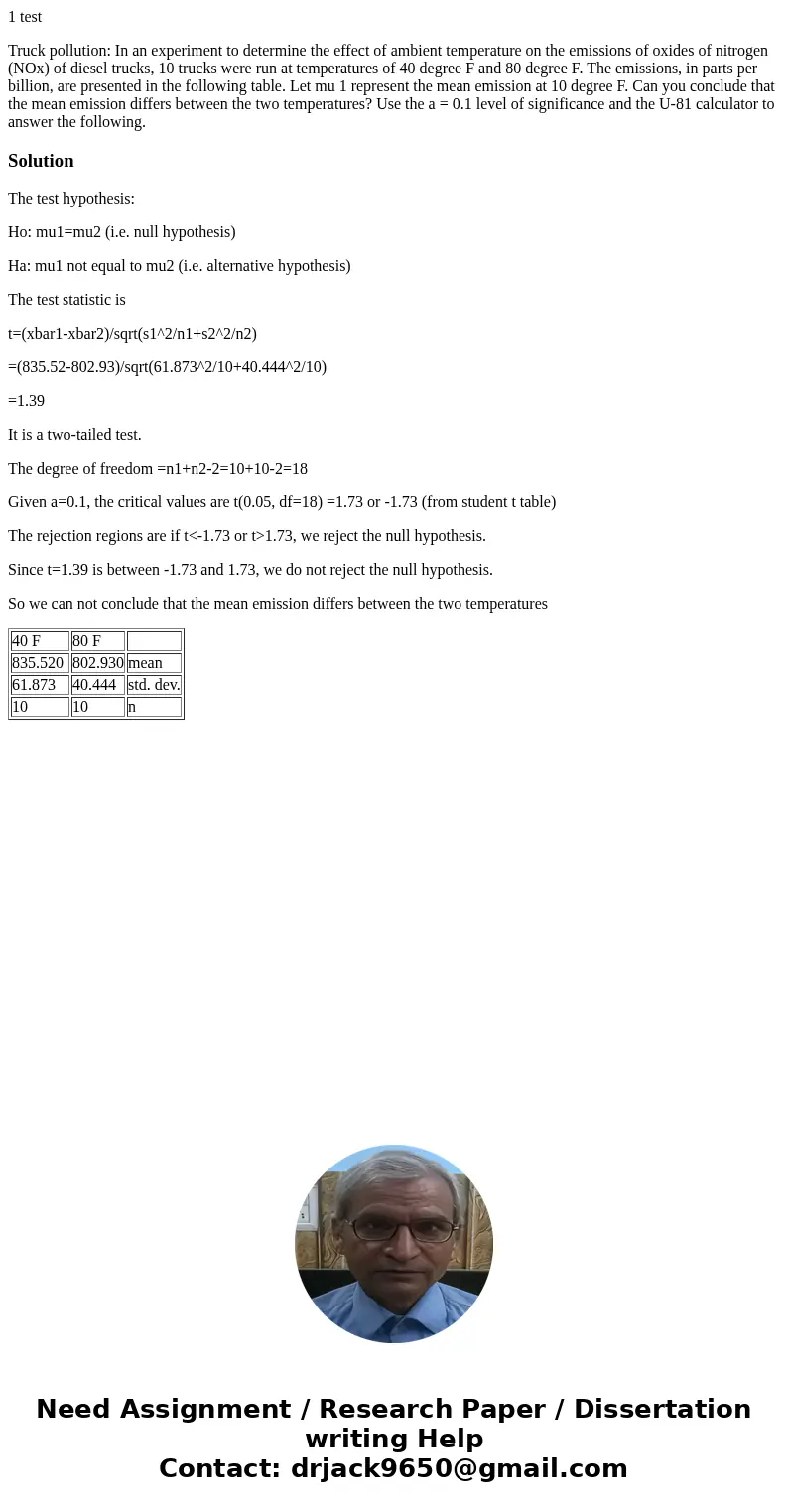1 test Truck pollution In an experiment to determine the eff
1 test
Truck pollution: In an experiment to determine the effect of ambient temperature on the emissions of oxides of nitrogen (NOx) of diesel trucks, 10 trucks were run at temperatures of 40 degree F and 80 degree F. The emissions, in parts per billion, are presented in the following table. Let mu 1 represent the mean emission at 10 degree F. Can you conclude that the mean emission differs between the two temperatures? Use the a = 0.1 level of significance and the U-81 calculator to answer the following.Solution
The test hypothesis:
Ho: mu1=mu2 (i.e. null hypothesis)
Ha: mu1 not equal to mu2 (i.e. alternative hypothesis)
The test statistic is
t=(xbar1-xbar2)/sqrt(s1^2/n1+s2^2/n2)
=(835.52-802.93)/sqrt(61.873^2/10+40.444^2/10)
=1.39
It is a two-tailed test.
The degree of freedom =n1+n2-2=10+10-2=18
Given a=0.1, the critical values are t(0.05, df=18) =1.73 or -1.73 (from student t table)
The rejection regions are if t<-1.73 or t>1.73, we reject the null hypothesis.
Since t=1.39 is between -1.73 and 1.73, we do not reject the null hypothesis.
So we can not conclude that the mean emission differs between the two temperatures
| 40 F | 80 F | |
| 835.520 | 802.930 | mean |
| 61.873 | 40.444 | std. dev. |
| 10 | 10 | n |

 Homework Sourse
Homework Sourse